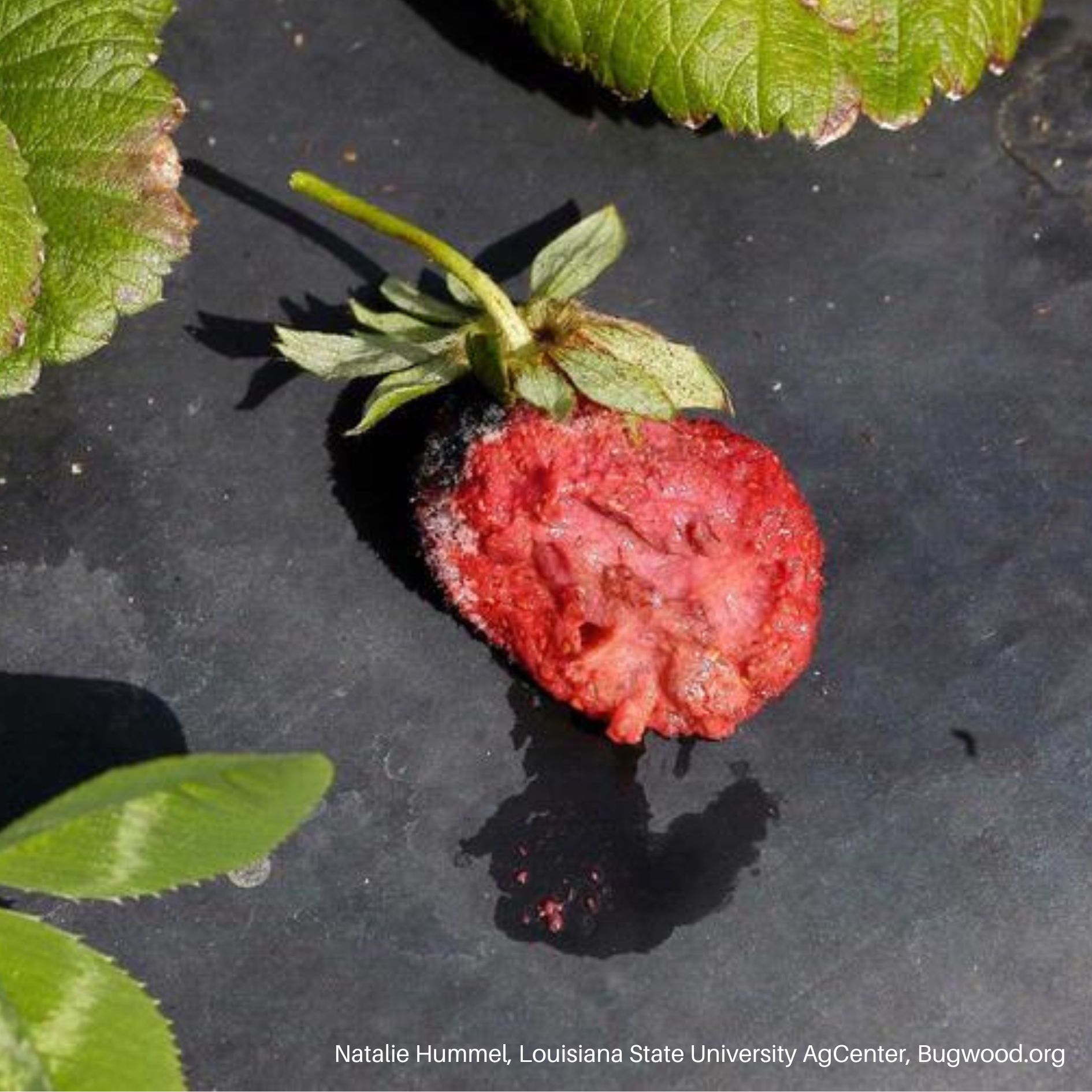Sap Beetles
HOSTS
- Corn
- Tomato
- Melons
DESCRIPTION
Adults are small, dark beetles with club shaped-antennae that may have colored wing markings depending on the species. Larvae are white to cream colored with a brown head and three pairs of short legs near the head.
BIOLOGY
Egg | Larva | Pupa | Adult
Sap beetles can have are several generations per season. Adults overwinter in protected places such as decaying vegetation, debris, or in soil. Eggs are laid in April to early May on or near decomposing plant material or in the soil. Sap beetles are attracted to sweet corn as it tassels and often prefer damaged ears. Adults feed on corn silk and pollen and chew on tassels. Larvae attack and feed on kernels in the upper half of the ear.
SYMPTOMS
Sap beetles are a concern when corn is tasseling or host crops are overripe or damaged. Adults and larvae feed with chewing mouthparts on fruits and vegetables. Adults feed on corn silk and pollen, and chew on tassels. Dusky sap beetle larvae chew on developing kernels, although there is rarely any external evidence of infestation. Sap beetles are attracted to ripe, damage, or overripe fruits and vegetables.
GENERAL MANAGEMENT
-
Sap beetles are typically secondary pests of corn, but can act as primary pests if populations are high. Super sweet corn varieties and damaged or overripe crops are particularly susceptible to sap beetle damage.
- Prevent damage from other primary pests (corn earworm, European earwig).
- Harvest host crops promptly when ripe; remove decayed and damaged corn ears and fruits.
- Use bait/pheromone traps to monitor and reduce populations.
- Disk or plow crops immediately after harvest.
INSECTICIDES
Insecticides are generally inappropriate because sap beetles invade crops near harvest and control with insecticides is difficult because adults and larvae are protected inside the ear.
Click here to reference insecticide options for sap beetles.





